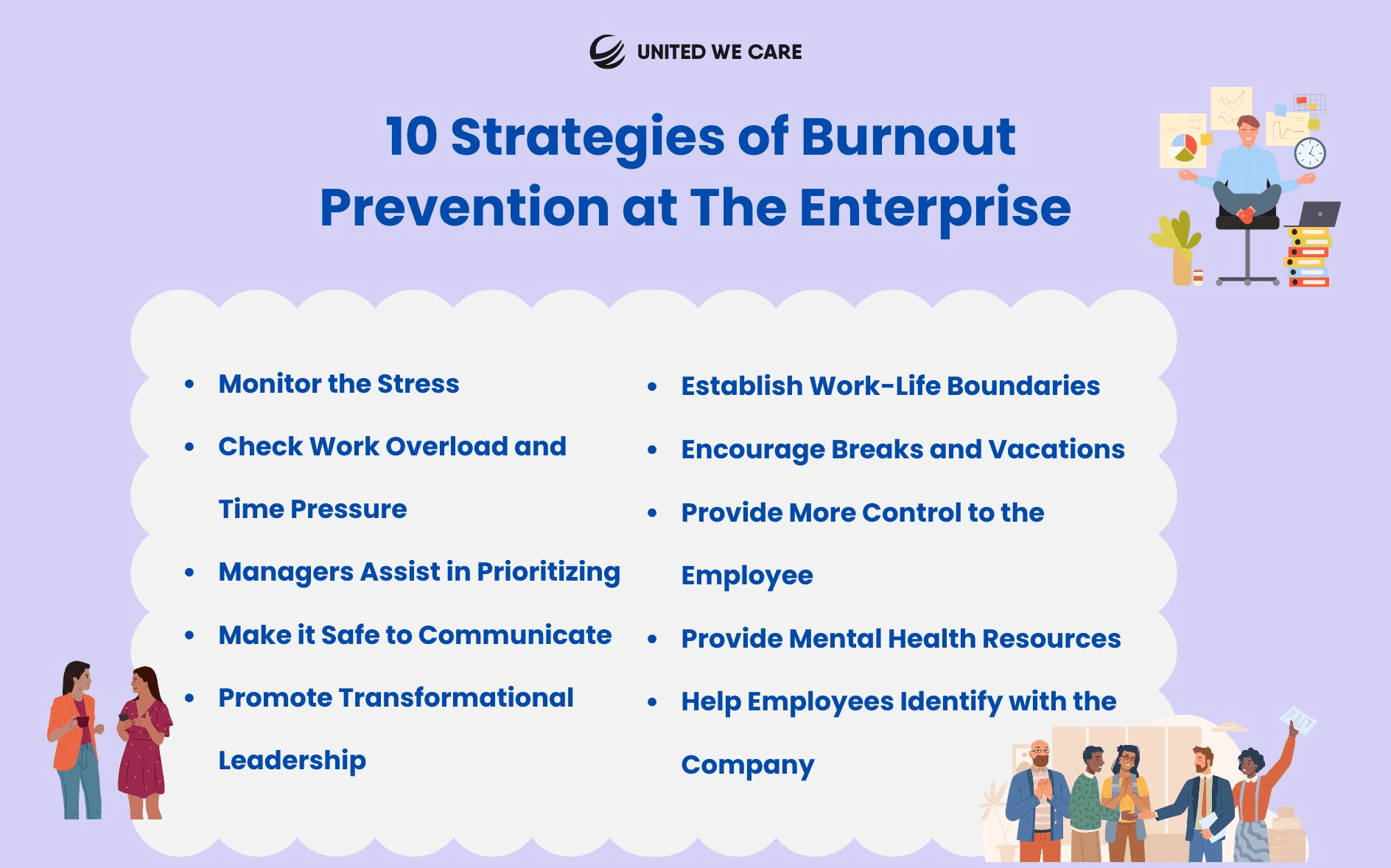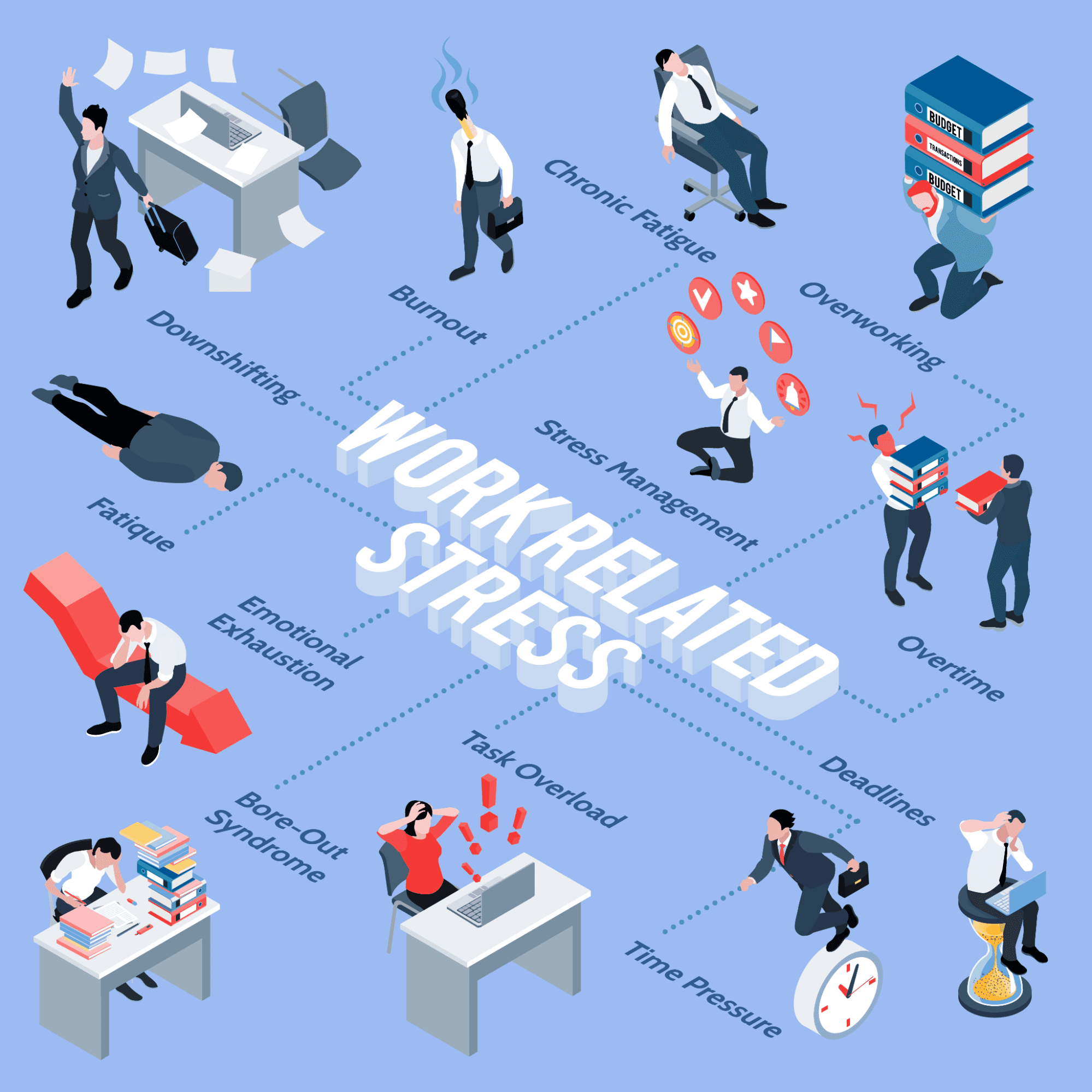Introduction
The term burnout is now in the vocabulary of everyone. There are massive amounts of resignations happening, and many are citing burnout as the reason. It is becoming increasingly clear to organizations that to retain talent, avoid multiple and repeated cycles of hiring, ensure productivity, and, most importantly, protect their employees, preventing burnout has become a necessity. While the problem statement is clear, the prospective and viable solutions are not easily available. The confusion on “how” to prevent burnout prevails in managers and enterprise leaders. This article addresses this gap and talks about 10 effective strategies that an enterprise can follow to prevent employee burnout.
Understanding Workplace Burnout
According to a recent survey by Deloitte done on the young population, 52% of Gen Zs and 49% of millennials reported feeling burnout due to the chronic stress of their workplace. Further, 42% of GenZs and 40% of millennials confirmed that this inhibited them from performing on their job [1]. To say the least, statistics like these are a warning sign for organizations across the world.
According to the 2019 definition by the World Health Organization, burnout is “a syndrome conceptualized as resulting from chronic workplace stress that has not been successfully managed.” It has specified three main identifiers of burnout: energy depletion or exhaustion, reduced efficiency, and negative attitudes toward or distance from the job [2].
Workplace burnout is a serious mental health concern as it can have negative consequences for both the person and the organization. The person becomes prone to a number of mental and physical health conditions and is unable to work. The organization, on the other hand, struggles with issues like high absenteeism, low productivity, and high turnover. According to one estimate, for the US economy, this translates to a cost of $500 billion [3]. However, with sincere efforts by the enterprise, prevention of burnout, as well as other related issues, is possible.
Symptoms of Workplace Burnout
Burnout affects the employee in multiple ways. Their work capacity, as well as their willingness to work, is reduced, and they experience multiple psychological symptoms. Some common ways in which burnout emerges are [4]:
- Emotional Exhaustion and mental fatigue
- Dissatisfaction with work
- Lack of interest or apathy
- Frequent distress
- Depressive symptoms
- Anger, frustration, or irritation
- Withdrawal from social interaction or increase in conflicts (especially at work)
- Health problems (proneness to headaches, insomnia, back pain, etc.)
- Difficulty concentrating on work
- Reduced productivity
- Increase in or starting of substance abuse (such as smoking, alcohol consumption)
- Cynicism and negativity towards work
- Feeling inferior and helpless
- Increase in absenteeism
- Chronic anxiety due to work
Burnout affects the individual’s emotional, cognitive, and social life. It significantly affects the person’s self-esteem as well as their morale towards work. In many cases, burnout results in the person leaving the job.
Causes of Workplace Burnout
Psychologists have studied the causes of burnout for decades. Essentially, stress and burnout are the result of high job demands and low job resources [5]. Resources and demands depend on the type of work culture and environment a person is in. The most common causes of burnout include [3] [5] [6]:
- Excessive workload
- Time pressure, such as urgent or unrealistic timelines
- Role ambiguity or role conflict
- Insufficient control of their job
- Unfair treatment at work
- Lack of communication and support from the managers
- Absence of spaces to communicate distress
- Lack of recognition
- Insufficient rewards and compensation
- Poor working relationships or community
When an individual continuously faces such demands at their workplace, their cynicism and dissatisfaction increase and coping strategies reduce. They might start undermining their own selves, and eventually, burnout sets in [5]. To protect the talent and the individual, prevention of burnout is necessary.
10 Strategies of Burnout Prevention at The Enterprise
There are many advice pieces on how to get over burnout. However, these advises do not take into account that the real cause of burnout does not lie within the employee. Further, if a talented yet burnt-out employee leaves the company for this journey of healing, it is still a loss for the company. It is time that organizations acknowledge their role in burnout prevention. Some simple strategies that you can employ in your enterprise are [5] [6] [7]:

- Monitor the Stress: HR departments can utilize various resources to understand the current state of job satisfaction and burnout in the employees. If stress and exhaustion levels are high, then programs can be introduced at an organizational level to address them.
- Check Work Overload and Time Pressure: Too many tasks and endless to-do lists can increase stress for the employee. Ensure that the tasks are manageable and expected within a realistic timeline.
- Managers Assist in Prioritizing: Organizations where there is an urgency culture cause higher stress. Instead of terming all tasks as urgent, managers can prioritize work for the employees in daily or weekly meetings. This will clarify expectations and help employees feel more in control.
- Make it Safe to Communicate: Employees will share their challenges and issues if they find a psychologically safe and supportive environment. They can also share insights and expectations from the company. If, on the other hand, their managers or bosses invalidate their inputs, are not open to feedback, and are not willing to communicate, dissatisfaction will grow. Companies can train managers to coach and support employees and mediate communication effectively between top and bottom levels.
- Promote Transformational Leadership: When managers and leaders spend time to promote individual attention, motivate employees, and provide support and opportunities for growth, employees are more likely to be satisfied.
- Establish Work-Life Boundaries: While this can be done at an employee level, a culture that values balance and boundaries between work time and personal time can ensure that employees have enough time to relax and rejuvenate. This will reduce stress.
- Encourage Breaks and Vacations: Regular breaks and vacations where employees are away from stress can help in building resilience. Encouraging breaks within the day where work no one discusses work or employees can relax for some time. Also, promote the use of vacation days so that employees retain their capacity to work.
- Provide More Control to the Employee: When employees are clear in their roles and expectations, they are likely to work better. At the same time, some flexibility in the role where employees can choose how they wish to structure their jobs can be helpful for reducing frustration with the job.
- Provide Mental Health Resources: It is important that employees have ready access to resources such as EAPs, counselors, and self-help material. If they are experiencing some stress, ready access can equip them to intervene quickly and work on the issue.
- Help Employees Identify with the Company: Humans are more passionate when they work for things they believe in or when they work for a community they identify with. Spending time in team building, building an identity, and building a community within the company can be useful in this regard.
Conclusion
As the world of work changes, more and more people are recognizing that preventing burnout is the ethical responsibility of the enterprise. It is a symbol of the value an organization places on its human resources. A company where there is a culture of burnout will face losses and experience a high turnover. Fortunately, some simple practices at the enterprise and managerial level are effective in preventing burnout and improving company as well as employee outcomes.
If you are an organization looking for more support for your employees, you can connect with our experts at United We Care. We offer EAPs for organizations and one-on-one consultations for employees or anyone willing to seek help for their mental health and well-being.
References
[1] “The Deloitte Global 2023 gen Z and millennial survey,” Deloitte, https://www.deloitte.com/global/en/issues/work/content/genzmillennialsurvey.html (accessed Sep. 29, 2023).
[2] “Burn-out an ‘Occupational phenomenon’: International Classification of Diseases,” World Health Organization, https://www.who.int/news/item/28-05-2019-burn-out-an-occupational-phenomenon-international-classification-of-diseases (accessed Sep. 29, 2023).
[3] J. Moss, Reprint h05bi7 published on HBR.ORG December – executives Global Network, https://egn.com/dk/wp-content/uploads/sites/3/2020/08/Burnout-is-about-your-workplace-not-your-people-1.pdf (accessed Sep. 29, 2023).
[4] D. Belias and K. Varsanis, “ORGANIZATIONAL CULTURE AND JOB BURNOUT – A REVIEW,” International Journal of Research in Business Management, 2014.
[5] A. B. Bakker and J. D. de Vries, “Job demands–resources theory and self-regulation: New explanations and remedies for job burnout,” Anxiety, Stress, & Coping, vol. 34, no. 1, pp. 1–21, 2020. doi:10.1080/10615806.2020.1797695
[6] B. Radley, “6 causes of employee burnout risk and how to prevent them,” Workday Blog, https://blog.workday.com/en-us/2021/how-to-prevent-employee-burnout.html (accessed Sep. 29, 2023).
[7] “12 Ways To Reduce Employee Stress and Burnout,” Michiganstateuniversityonline.com, https://www.michiganstateuniversityonline.com/resources/leadership/12-ways-managers-can-reduce-employee-stress-and-burnout/#:~:text=This%20means%20managers%20must%20also,scheduling%20to%20accommodate%20individual%20schedules. (accessed Sep. 29, 2023).










